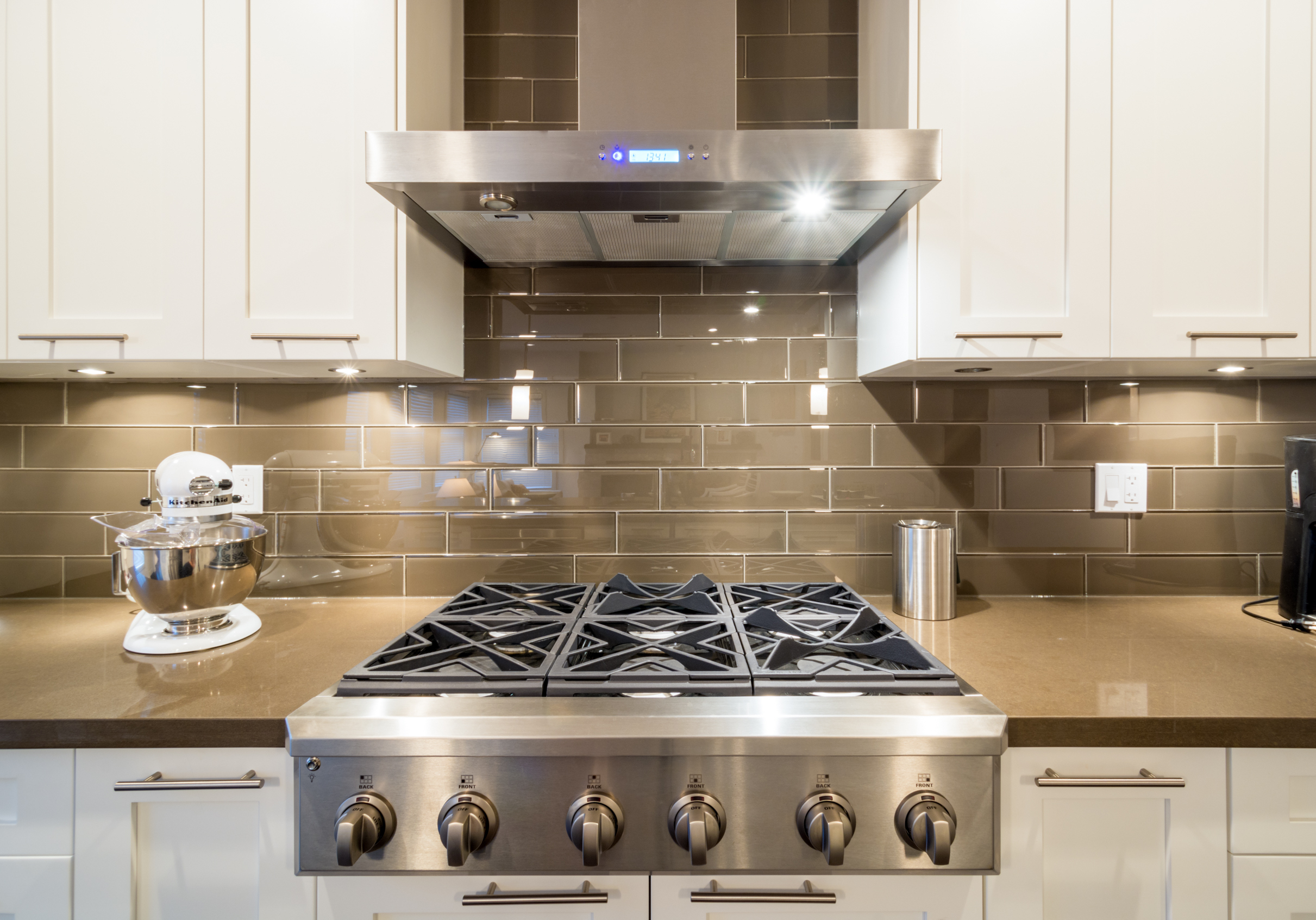
17 Sep Understanding Range and Hood Options for your Kitchen
While the selection of kitchen cabinets is often the central focus of a kitchen remodel, homeowners often overlook investing in high-quality appliances that set the groundwork for an efficient and attractive working space. An appropriately selected range and hood can be the focal point of a kitchen, serving as a functional and well-designed sculpture. With so many options available, selecting the right range and hood can be challenging until you know the basics.
Range options
The majority of residential ranges are freestanding, slide-in styles with four burners and one oven. These units typically offer a storage drawer or a broiler in addition to the oven. Some freestanding range manufacturers now offer a split-oven configuration which provides two smaller ovens in the same amount of space, giving home chefs the opportunity to simultaneously bake dishes on varying temperatures.
For serious chefs, residential ranges do not offer the features required for restaurant quality food preparation. Though more expensive, commercial-style ranges for residential use are increasing in popularity due to greater power, customizable features, and limitless configuration opportunities. Usually containing multiple burners, a grill, raised boilers, griddles, and double ovens, the options are plentiful for the household chef. Once available only in stainless steel, these ranges are now available in colored enamels, reproduction-style vintage, cast iron, and stainless steel blends.
Hood options
Though range hoods are not always required, most cooking behaviors and the natural ventilation in the kitchen are not adequate to prevent steam and oil particles from dispersing through the air. Hoods prevent grease, moisture, and odors from permeating your home.
Standard over-the-range hoods can be wall-mounted units without cabinetry or under-cabinet hoods blended with the cabinetry. Built-in over-the range hoods are typically part of the cabinetry and designed to appear like cabinets without any storage space. With both of these options, the air is typically vented through the wall, or the air may be directed through the ceiling and roof.
Pop-up vents are useful when the ceiling restricts access to appropriate ventilation. These slim vents are located behind the cooktop and pull steam and smoke into the ductwork in the floor instead of the ceiling. These downdraft vents are not as powerful as other options, but they can give more flexibility for design considerations.
For microwave lovers with small kitchens, a microwave hood combination can be utilized for those who do light cooking and do not require as much powerful ventilation offered by a stand-alone hood.
Regardless of the type of hood you desire, hoods are a key element in kitchen décor. Whether you select a simple stainless steel design, a cabinetry integrated style, or a dramatic handmade copper hood, a well-chosen range hood can define the feel and set the tone for the entire kitchen.
At C3 Cabinetry, we understand cabinetry is only one aspect of the homeowner’s dream kitchen. With years of experience in kitchen design, we thought we could share some of our best range and hood finds with our customers to assist you with designing your kitchen.
Jeni C. Powell is a freelance writer who specializes in blog posts, website content, summary and analysis, and editing. Her industry related strengths include Marketing, Education, Home Living, Construction, Legal, and Parenting. Please visit her website at www.jenifreelance.com

